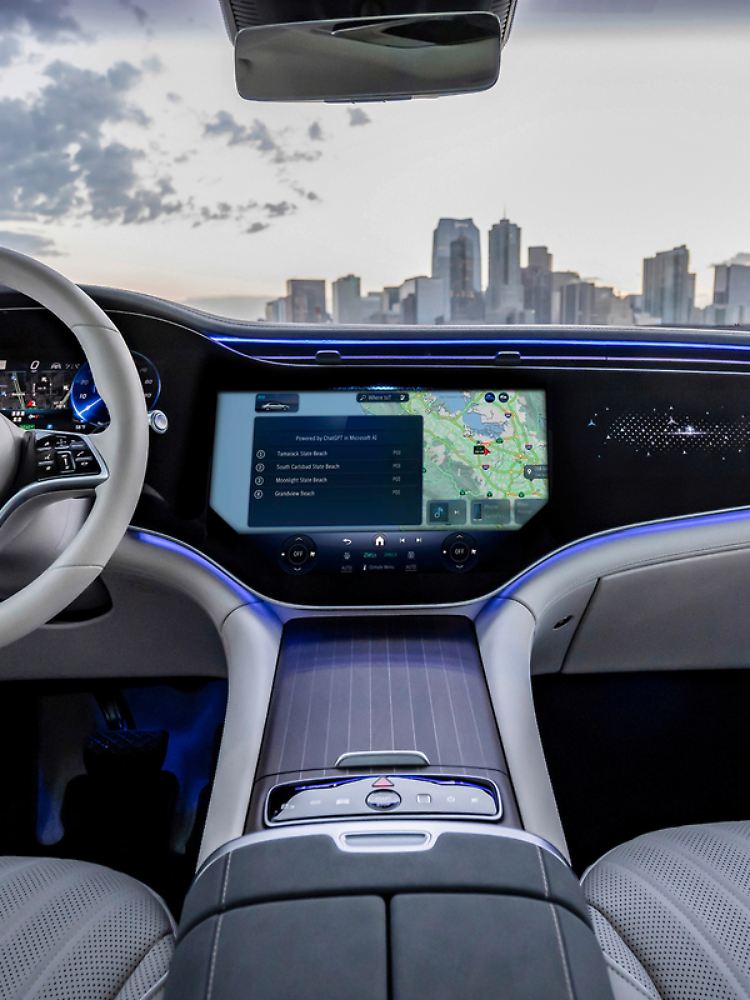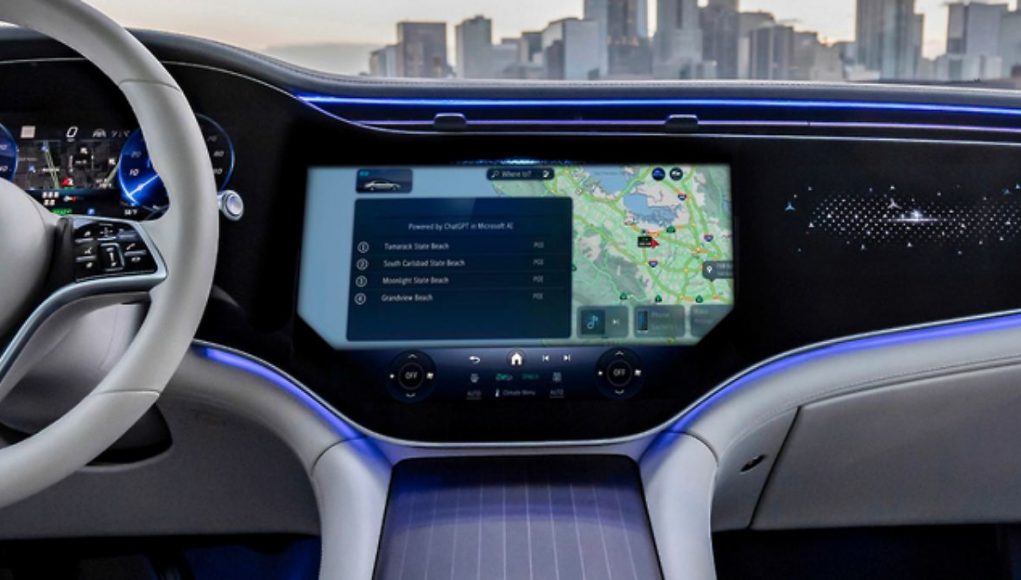New AI assistants
Are chatbots turning cars into chatterboxes?
This audio version was artificially generated. More info | Send feedback
More and more voice assistants are finding their way into cars – Alexa, Siri and Co have already changed the dialogue with the vehicle. But with AI chatbots, the big chatter is already entering the next round.
“Hey, what’s the weather like along the route?” When Justin Forsyth climbs into the prototype of the new Mini Countryman, he no longer has to press many buttons or tap menu fields. Because with the next generation of the small car, a new digital assistant will also go into series production.


In dialogue with the car – via AI.
(Photo: Stellantis/dpa-tmn)
“With his very own character, British accent and English humor,” says Forsyth, who works as a programmer in the manufacturer’s tech office in Silicon Valley – and says that he was already reprimanded for being a late riser when he took the car with him at lunchtime “Good morning.” Then he asks about the tire pressure, says how warm he would like the interior to be and asks for his favorite music.
The assistant is based on Amazon’s Alexa software, but has an auto touch and speaks its own dialect, explains Forsyth. And thus marks the beginning of a new language regulation between humans and machines. Automakers want to go even further.
The topics should extend beyond the car
Since AI chatbots like ChatGPT have been on everyone’s lips, they have also been experimenting with the so-called large language models here in Silicon Valley and in their development centers around the world. The goal: Dialogues should become more and more natural and the topics should also extend beyond the car. Chatbots are supposed to read children’s fairy tales in the car, summarize the news or give travel tips that go far beyond simply naming points of interest such as sights.
“ChatGPT in the car will holistically take the user experience to a new level,” believes Timo Littke from strategy consultant Berylls. This begins with dramatically improved speech recognition and speech output, which is becoming more understandable and individual. The range of topics and information is also increasing because all vehicle information, knowledge from the Internet and data from connected user accounts such as your own email inbox or calendar are available, says Littke.
Assistants are becoming more individual
The assistants would also become more individual because brands could introduce their own characteristics using AI chatbots. In addition, the dialogue could often take the course of the conversation well into the past into account. And at the same time, Littke also hopes for greater safety: “The simpler and more intuitive use reduces distractions and the drivers can concentrate better on the traffic.”


Mercedes has expanded its MBUX voice assistant “Hey Mercedes” to include ChatGPT as a test.
(Photo: Mercedes-Benz AG/dpa-tmn)
The car manufacturers are adopting the know-how of the large internet companies, but want to implement it in such a way that drivers don’t have to make any major adjustments. And above all, they attach importance to setting boundaries: “We retain sovereignty over the data and take responsibility for its protection,” says BMW developer Forsyth.
The competition also attaches great importance to the fact that they work with shielded cloud environments. While these were previously mainly theoretical considerations or tests behind closed doors, manufacturers are now increasingly venturing out onto the streets with AI chatbots. Mercedes started a test run in the summer and integrated ChatGPT into its MBUX infotainment system.
Natural dialogues and follow-up questions
The beta program expands existing Hey Mercedes functions such as navigation input or weather queries with the capabilities of ChatGPT. In this way, we want to make conversations possible with natural dialogues and follow-up questions,” explains Mercedes development boss Markus Schäfer.
While Mercedes limited itself to the USA, Citroen’s offshoot DS has now also been offering a comparable system in Germany since the fall. Initially, 20,000 customers in half a dozen European countries can register for it free of charge.
Then there should be, among other things, individual bedtime stories for the children, the most important traffic rules for the countries along the route or snack ideas for the next rest stop. Or you can ask yourself quiz questions or discuss the national team’s chances at the 2024 European Championship while driving.
AI impresses with its ability to interact
According to DS parent company Stellantis, the ability to interact is one of the outstanding achievements that artificial intelligence has made in recent years. That’s why the French leave little doubt that the test run will soon go into regular operation.
Other manufacturers can hardly escape the fascination of AI chatbots: If you believe the rumors from the tech scene, the next market entry among the chatterboxes is already imminent. Because now that VW is using the same software as Mercedes for its voice control, the adoption of the AI chatbot is only a matter of time.
And it won’t stay that way, believes Berylls expert Timo Littke: “The high user added value will lead to high demand and drive many manufacturers to develop their own ChatGPT integrations.” More natural language and better recognition, more detailed dialogues and an ever-expanding range of topics – of course, the drivers and their passengers first and foremost benefit from the new chat applications.
But when such AI voice bots are used as a development tool, it also works in the opposite direction – for example at the British startup Wayve. This uses artificial intelligence so that people can explain to the car what they are doing and why. The British want to train the autopilot and get closer to autonomous driving. They really take machine learning literally: the human controls, the machine learns.
































